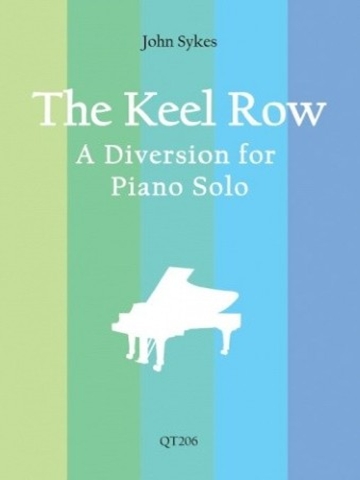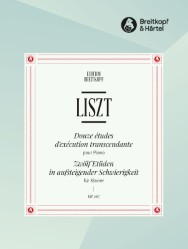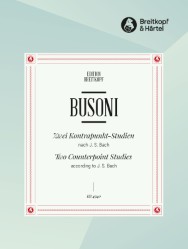The Keel Row – A Diversion for Piano

| Product Code: | 979-0-708-18705-9 |
| ISMN: | 979-0-708-18705-9 |
| Publishers Number: | QT206 |
| Language: | English |
| Page count: | 8 |
| Condition: | New |
John Sykes wrote The Keel Row, a Diversion for Piano in 1938. It well fitted Sykes' considerable pianistic skills and makes a grand encore piece.
Composed as…
Composed as a piano diversion that captures the spirit of Tyneside folk tradition. Drawing on the familiar folk tune “The Keel Row,” Sykes transformed it into a concise piano showpiece.
His arrangement reflects the interwar era’s fascination with jazz-influenced rhythms and adventurous harmonies. The piece bridges folk heritage and modern technique in an energetic form.
The work begins by stating the traditional melody clearly, inviting listeners into its rustic charm. Soon, syncopated left-hand figures and chromatic chords inject a swing-like vitality into the tune. Rapid scale passages and sharp chordal punctuations challenge the pianist’s dexterity and musicality. By layering jazz-inflected harmonies beneath a folk melody, Sykes merges two musical worlds seamlessly.
As a set of variations, The Keel Row elaborates on distinct elements of the original theme. Sykes experiments with rhythmic displacement, ornamental figuration, and contrasting registers to sustain interest. Dynamic contrasts build tension toward a spirited coda, where the melody returns in full flourish. The formal design highlights Sykes’s skill at thematic transformation and structural clarity.
The Keel Row has appeared in recital programs and piano anthologies since its debut. Though Sykes spent most of his career teaching at Kingswood School in Bath, this diversion found wider circulation among pianists seeking engaging encore pieces.
Clocking at around three minutes, the score demands crisp articulation and stylistic versatility within its eight pages. Its technical challenges ensure a memorable performance.
Today, The Keel Row endures as a testament to Sykes’s gift for blending popular tradition with modern piano idioms. Its lively character continues to charm audiences in both concert and educational contexts. T
he piece offers a snapshot of the interwar period’s creative spirit and a glimpse into Sykes’s compositional voice. For pianists and listeners alike, this diversion remains a delightful celebration of melody, rhythm, and cultural heritage.
About the composer John Austin Sykes (b.1909 d.1962):
Early Life and Education
John Austin Sykes was born in 1909 in colonial India, where his father served in the Indian Civil Service. He attended Clifton College in Bristol, studying organ under Douglas Fox and earning his FRCO qualification while still a schoolboy.
From 1928, he was organ scholar at Balliol College, Oxford, reading Modern History and serving as president of the Oxford University Opera Club. In 1932, he entered the Royal College of Music to study composition with Ralph Vaughan Williams and Gordon Jacob, taking piano as a secondary study.
Teaching Career and Conscientious Objection
In 1936, Sykes joined the staff of Methodist Kingswood School in Bath, where he remained for life. He was appointed Director of Music in 1952 and taught notable pupils such as the historian E. P. Thompson.
During World War II, he registered as a conscientious objector and served in the Pioneer Corps, balancing his pacifist principles with contributions to the war effort.
Compositional Output
Most of Sykes’s music was written for Kingswood School or close friends, and much remains unpublished in the John Sykes Archive at Kingswood School, Bath.
Orchestral works: a symphony, a piano concerto, a suite “in old style” for strings, and Eight Pieces for small orchestra
Choral works: a Te Deum, the Christmas anthem The Child of the World (text by Randall Swingler), and Litanie for double chorus (performed in London, 1933)
Theatre music: over 20 scores for school productions
Chamber and keyboard music: piano solos, duos (notably for the Peppin twins)
Song settings: 36 settings of William Blake’s Songs of Innocence and Experience, plus poems by Randall Swingler
In 2022, the baritone Mark Padmore highlighted Sykes’s “On Another’s Sorrow” in his BBC Radio 3 survey of English art song, renewing interest in Sykes’s contributions to 20th-century repertoire.
Further Exploration
If you’d like to dive deeper, the John Sykes Archive at Kingswood School holds autograph manuscripts, correspondence, and unpublished scores. Peter Clulow’s liner notes for Fearful Symmetry provide insightful commentary on Sykes’s stylistic influences and his relationship with Vaughan Williams.
R.R.P £5.95
Our Price: £5.06
Digital Download – PDF
Shipping costs: No shipping




